By: Professor Humphries
Speaker Engineer
Speakers Working Together

Spend some quality time with your room. It’s as much a component in your home theater system as any of the electronics you’ll buy.
- - - - - - - - - - - - - - - - - - - - - - - - - - - - - - - - - - - - - - - - - - - - - - - - - - - - - - - - - - - - - - - -
Variations on this theme sometimes include:
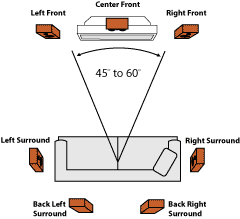
1. A specialized center channel speaker.
2. More surround speakers (assuming it’s okay with your receiver).
3. Specialized dipole surround speakers for a more diffused, non-directional sound.
4. A subwoofer built into the left and right front speakers, usually accomplished by tower speakers.
- - - - - - - - - - - - - - - - - - - - - - - - - - - - - - - - - - - - - - - - - - - - - - - - - - - - - - - - - - - - - - - -
The Center
Audio lovers revere the center channel speaker as the most important speaker in your home theater system. The reason is two-fold. First, it’s a hard worker, producing more sound than all the other speakers combined. And second, it’s the speaker most of the dialogue comes from. Unplug it and it’s kind of hard to follow a movie. The center speaker differs from your old stereo speaker in several ways:
- It’s size and shape allow it to go on or near your TV monitor.
- It needs to be magnetically shielded for CRT TV’s.
- It usually isn’t designed to reproduce really low bass. Many speaker engineers think they work better if they can’t reproduce bass since bass is so affected by the surfaces around the speaker.

- - - - - - - - - - - - - - - - - - - - - - - - - - - - - - - - - - - - - - - - - - - - - - - - - - - - - - - - - - - - - - - -
The Fronts
These speakers lead double lives. In their home theater life they handle most of the soundtrack and off-screen effects. In their stereo life they transform into the main speakers when you’re listening to CDs. Fortunately, conventional full range stereo speakers or bookshelf speakers with a subwoofer work for both of these applications.
These speakers differ from your old speakers because:
- A greater effort has been made to get the high frequency drivers near ear level.
- They are matched to the drivers in the rest of the home theater speakers.
- They are usually magnetically shielded so that in their home theater role they don’t interfere with your TV picture.
- - - - - - - - - - - - - - - - - - - - - - - - - - - - - - - - - - - - - - - - - - - - - - - - - - - - - - - - - - - - - - - -
The Surrounds
All hail to the speakers that give home theater its spacious, enveloping sound. There are two schools of thought as how best to accomplish this:
1.Dolby Labs recommend using a bookshelf speaker (could be the same as your fronts and center) positioned so they are not aimed into the listening area. 2.THX, on the other hand, has championed a dipole design. What is dipole? Take the quick lesson.
A Quick Lesson On Dipole:
Consider this, if you wire two identical speakers out of phase with each other and you are equal distance from them, you won’t hear either of them without the room reflections. While one speaker is pressurizing the air, the other is rarefying. The result is that the waves cancel each other out.
Now, if you place these speakers back-to-back and put them on a wall at equal distance from you, you’ll hear reflected sound. This makes the sound very diffused and hard to localize. This is known as dipole and what THX recommends.
- - - - - - - - - - - - - - - - - - - - - - - - - - - - - - - - - - - - - - - - - - - - - - - - - - - - - - - - - - - - - - - -
From In-Wall to In-ceiling
In-wall and in-ceiling speakers have been developed to accommodate rooms that don’t have space for standing speakers. They can mount inconspicuously in the wall or ceiling. These speakers can offer good performance but, if you choose this option, you’ll want to get them from the same manufacturer that made your box speakers assuring tonally compatibility.

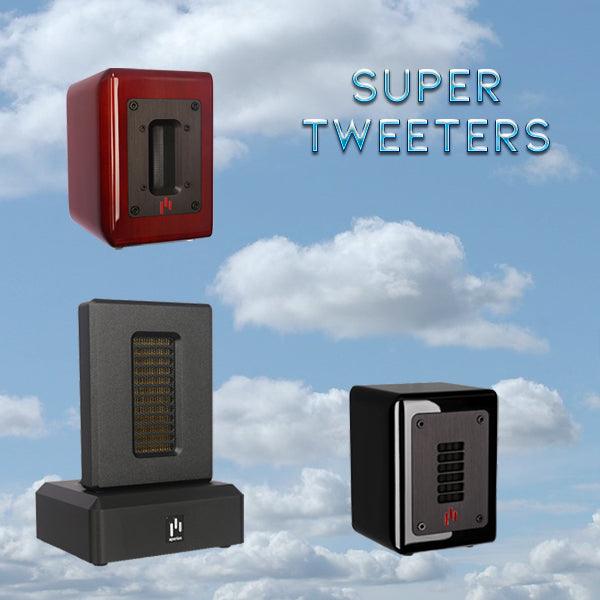


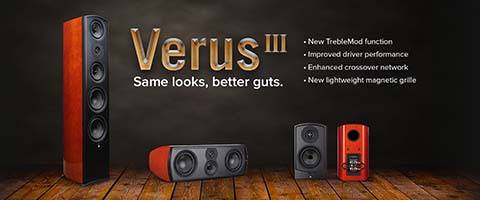

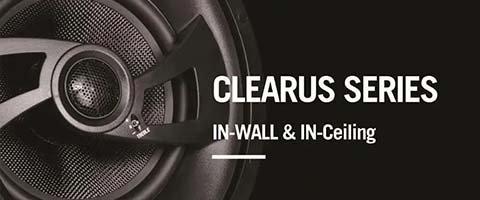
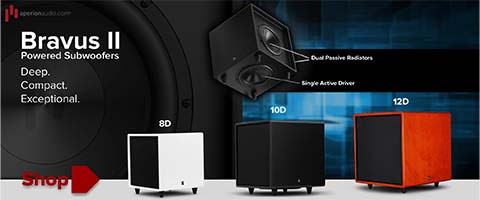


 https://www.aperionaudio.com
https://www.aperionaudio.com